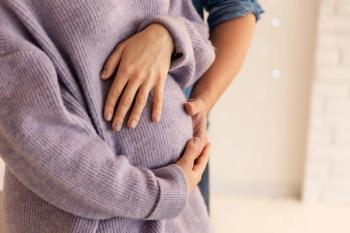
Sleep problems tied to higher hypertension odds in postmenopausal women
Study finds trouble sleeping, sleep apnea, and short or long sleep duration are linked to higher odds of hypertension in postmenopausal women.
Postmenopausal women experience a disproportionate burden of hypertension compared with men of the same age, partly because of the decline in estrogen levels that occurs during and after the menopause transition. They also frequently report sleep disturbances, including insufficient sleep, difficulty sleeping, and symptoms of obstructive sleep apnea. The study Association between sleep-related disorders and hypertension in postmenopausal women from the United States analyzed data from 3,560 naturally postmenopausal women in the National Health and Nutrition Examination Survey (NHANES) to evaluate the relationship between sleep-related disorders and the odds of hypertension.1,2
According to The Menopause Society, sleep disturbances are increasingly recognized as an important contributor to cardiovascular risk in midlife and older women. Sleep is described as a “fundamental physiologic necessity for cardiovascular health,” and postmenopausal women consistently report greater difficulty obtaining adequate sleep. The organization notes growing evidence that sleep disturbances represent “a substantial, yet often undervalued, risk factor.”
What sleep-related factors were analyzed in this study?
The investigators evaluated 3 primary sleep-related exposures: self-reported trouble sleeping, sleep duration, and obstructive sleep apnea symptoms. Sleep duration was categorized as insufficient (<7 h/night), mid-range (7-9 h/night), or excessive (>9 h/night). Trouble sleeping was defined according to responses indicating a physician-identified sleep problem, and obstructive sleep apnea was defined through reports of snoring, gasping, daytime sleepiness, or prior diagnosis.
Hypertension was defined by blood pressure readings, previous diagnosis, or self-reported use of antihypertensive medications. Logistic regression models with incremental covariate adjustment assessed the relationships between each sleep factor and hypertension prevalence. Restricted cubic splines were used to evaluate nonlinear associations between sleep duration and hypertension.
What were the key findings on sleep duration and hypertension?
A U-shaped relationship between sleep duration and hypertension was identified. Women reporting mid-range sleep (7-9 hours) had the lowest odds of hypertension, whereas both insufficient and excessive sleep were associated with increased odds. The restricted cubic spline model indicated that the lowest likelihood of hypertension occurred at 7 hours of sleep. Excessive sleep duration was associated with nearly twice the odds of hypertension in fully adjusted models.
The press release noted that the study “suggested a U-shaped relationship between sleep duration and hypertension, indicating that both insufficient and excessive sleep were also associated with an increased risk of hypertension.”
How did trouble sleeping and obstructive sleep apnea relate to hypertension risk?
Self-reported trouble sleeping was associated with higher odds of hypertension. In fully adjusted models, trouble sleeping was linked with a 61% increase in odds. Obstructive sleep apnea symptoms were also associated with an increased likelihood of hypertension after adjustment for demographic, clinical, and lifestyle factors.
The press release emphasized these associations, noting that “trouble sleeping and obstructive sleep apnea were associated with increased odds of hypertension in postmenopausal women.”
Did body mass index influence the relationships observed?
Body mass index moderated the associations between sleep-related disorders and hypertension. Stronger effects were observed in women with obesity. At a BMI of 30 kg/m² or higher, all sleep duration categories—insufficient, mid-range, and excessive—were associated with elevated odds of hypertension. Among women with BMI <25 kg/m², excessive sleep remained associated with increased odds.
The Menopause Society highlighted this finding in a press release, stating that “body mass index moderated these associations with stronger effects observed in obese women.”
What are the clinical implications for physicians caring for postmenopausal women?
The findings underscore the importance of evaluating sleep quality, sleep duration, and symptoms of obstructive sleep apnea as part of a comprehensive assessment of cardiovascular risk in postmenopausal women. According to the press release, “the study findings raise awareness around the importance of improving sleep quality and optimal weight management during and after the menopause transition as key factors in mitigating long-term cardiovascular risk,” said Monica Christmas, MD, associate medical director for The Menopause Society.
As sleep disturbances and hypertension share overlapping physiologic pathways—including sympathetic activation, inflammation, and metabolic changes—addressing sleep symptoms may play a role in blood pressure management. This study reinforces existing clinical attention to sleep disorders in postmenopausal women and highlights opportunities for preventive intervention.
References
- Sleep-Related Disorders Associated With Hypertension in Postmenopausal Women. The Menopause Society. November 12, 2025. Accessed November 13, 2025. https://menopause.org/press-releases/sleep-related-disorders-associated-with-hypertension-in-postmenopausal-women
- Liu Z, Yang X, Sun F, et al. Association between sleep-related disorders and hypertension in postmenopausal women from the United States. Menopause. Published online November 11, 2025. doi:10.1097/GME.0000000000002650
Newsletter
Get the latest clinical updates, case studies, and expert commentary in obstetric and gynecologic care. Sign up now to stay informed.
















